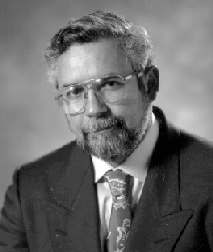
Spring/Summer 1999
Volume 6, Issue 2
Spring/Summer 1998
Volume
3, Issue 1
January 1995
Volume
2, Issue 4
October 1994
Volume
2, Issue 1
January 1994
 Manny Salas
Manny Salas
Director, Institute for Computer Applications in Science and Engineering (ICASE)
Manny Salas' work in the field of Computational Fluid Dynamics (CFD) began when he was an undergraduate student at the Polytechnic Institute of Brooklyn. He received his B.S. in Aeronautics (summa cum laude, 1969) and his M.S. in Aeronautics and Astronautics (1970), then joined Grumman Aerospace Corporation as a research scientist in 1972. While at Grumman, he worked on the numerical simulation of the Space Shuttle flow field. "This was a very exciting project," he says. "The computers available back then were not quite up to the challenge and we had to be extremely frugal with the use of memory. It was a good training ground for future efforts."
In 1974, Salas left Grumman to start a 22-year career at NASA Langley Research Center. During his career at NASA, he contributed to the development of numerical algorithms used in the calculation of hypersonic and transonic flows. Particularly significant was his treatment of far-field boundary conditions using Riemann variables and the treatment of discontinuities using "shock-fitting" techniques. "My passion, however, has always been to learn about fluid mechanics using numerical simulation," Salas says. "I consider my most important contributions those that have helped in the understanding of some fluid dynamical phenomenon, such as explaining the stability of a shock wave in a converging nozzle, or finding the causes of inviscid separation."
From 1984 to 1989, Salas was Chief of the Theoretical Aerodynamics Branch at Langley. This group was responsible for the solution of problems in aerodynamics and fluid mechanics in the transonic speed range. Under Salas' leadership, the group gained recognition for the development of many codes used in the aircraft industry today. In 1989, Salas was appointed Chief Scientist for the Fluid Mechanics Division at Langley. In this role, he provided overall strategic guidance to NASA Langley's CFD program. In 1991, Salas was given the additional responsibility of managing the High Performance Computing and Communications Program at Langley. As director of this program, he focused on the use of massively parallel computers to facilitate research in multidisciplinary design and optimization of aircraft. This activity prompted his interest in aerodynamic shape optimization, which is his main area of research today.
In February of this year, Salas retired from NASA to accept the directorship of the Institute for Computer Applications in Science and Engineering (ICASE). The institute was founded in 1972 and is operated by the Universities Space Research Association (USRA). Its mission is to strengthen the interactions between NASA Langley scientists and the academic community. The principal areas of activity at ICASE are applied mathematics, computer science, numerical analysis, and fluid dynamics. ICASE became an affiliated CRPC site last year. "The CRPC and ICASE complement each other well in many areas, including multidisciplinary research, optimization, and high-performance computing issues," says Salas, who is also a member of the CRPC Technical Steering Committee. "We hope to leverage the CRPC's expertise in these areas on problems of interest to NASA. Already, CRPC scientists and ICASE scientists are collaborating in High Performance Fortran, optimization methods, and automatic differentiation. We hope to add other projects in the future."
Salas is the author or co-author of approximately 75 technical papers and editor of several books. He has lectured extensively at many national and international meetings, and has taught graduate courses in fluid dynamics and numerical analysis at several universities. He has received numerous awards, including NASA's medal for Exceptional Scientific Achievement for his contributions to theoretical and computational fluid dynamics.
Table of Contents